Ohagi (also known as Botamochi) is a traditional Japanese sweet that combines glutinous rice and anko (sweet red bean paste) in a delightful way. Deeply rooted in Japanese culture, it has a history of over a thousand years, making it perfect not only for those curious about anko-based desserts but also for anyone interested in exploring Japanese traditions.
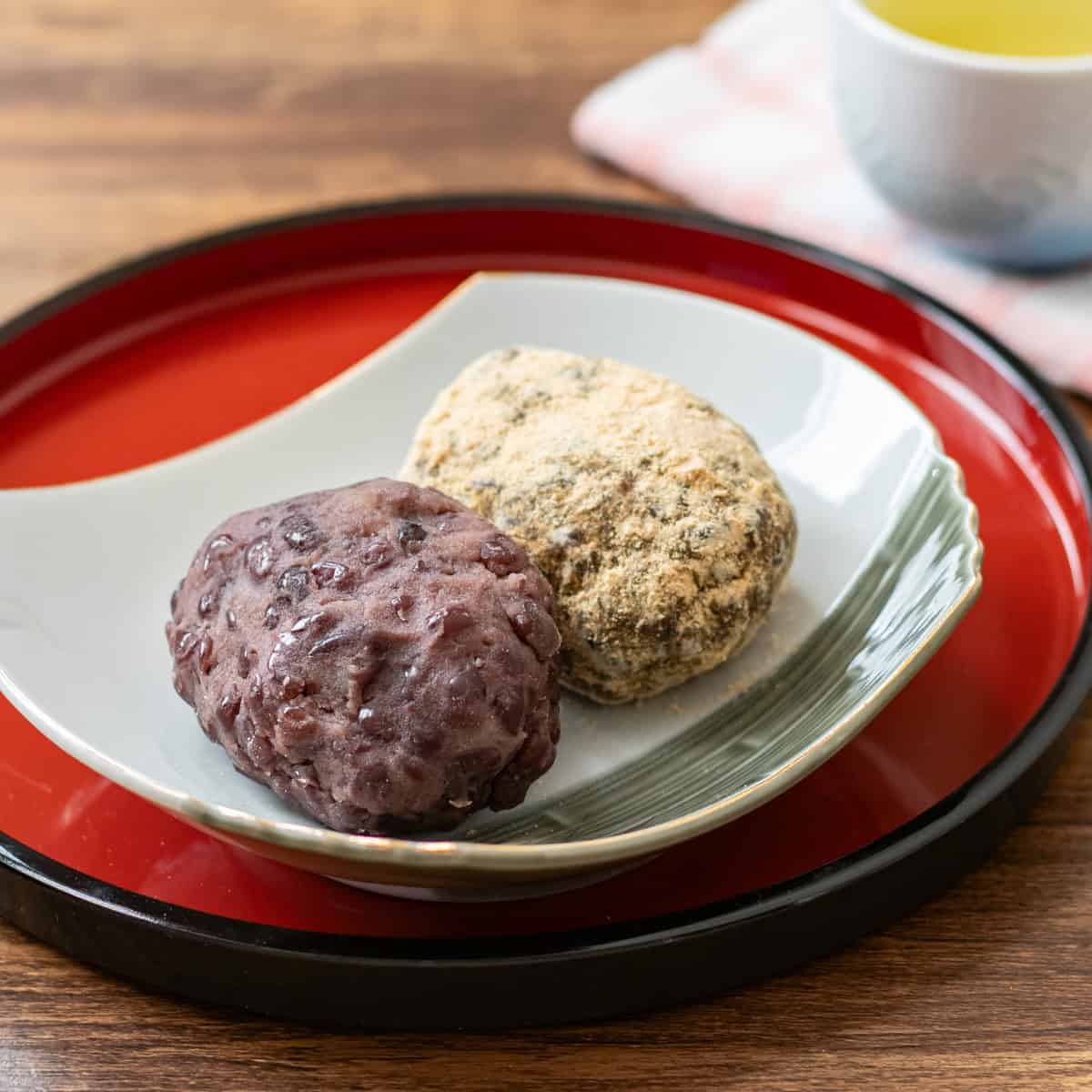
Jump to:
What is Ohagi?
Ohagi is a traditional Japanese sweet made by lightly pounding cooked glutinous rice, shaping it into small ovals or rounds, and covering them with anko (sweet red bean paste). It is also known as Botamochi, and in Japan, this treat was historically called by different names depending on the season: "ohagi" in fall and "botamochi" in spring. This naming convention comes from comparing the sweet to seasonal flowers—bush clover (hagi), which blooms in the fall, and peony (botan), which blossoms in the spring.
The use of these seasonal flowers as metaphors for this treat is deeply rooted in Japanese culture. In Japan, there is a custom of honoring ancestors and making offerings during the spring and fall equinoxes, a tradition known as "ohigan."
Since ancient times, the color red has been believed to have the power to ward off evil spirits in Japan, so ohagi (or botamochi), with its reddish-brown appearance, has traditionally been a staple of the offerings. In other words, the two names of this treat reflect its association with the seasons of each ohigan.
Today, it is called by either name regardless of the season and has become a beloved treat not only for offerings but also for everyday enjoyment. It is a popular sweet commonly found in Japanese grocery stores and convenience stores. The combination of the sweetness of anko and the sticky texture of glutinous rice is simply perfect, so I highly recommend trying to make this treat at home.
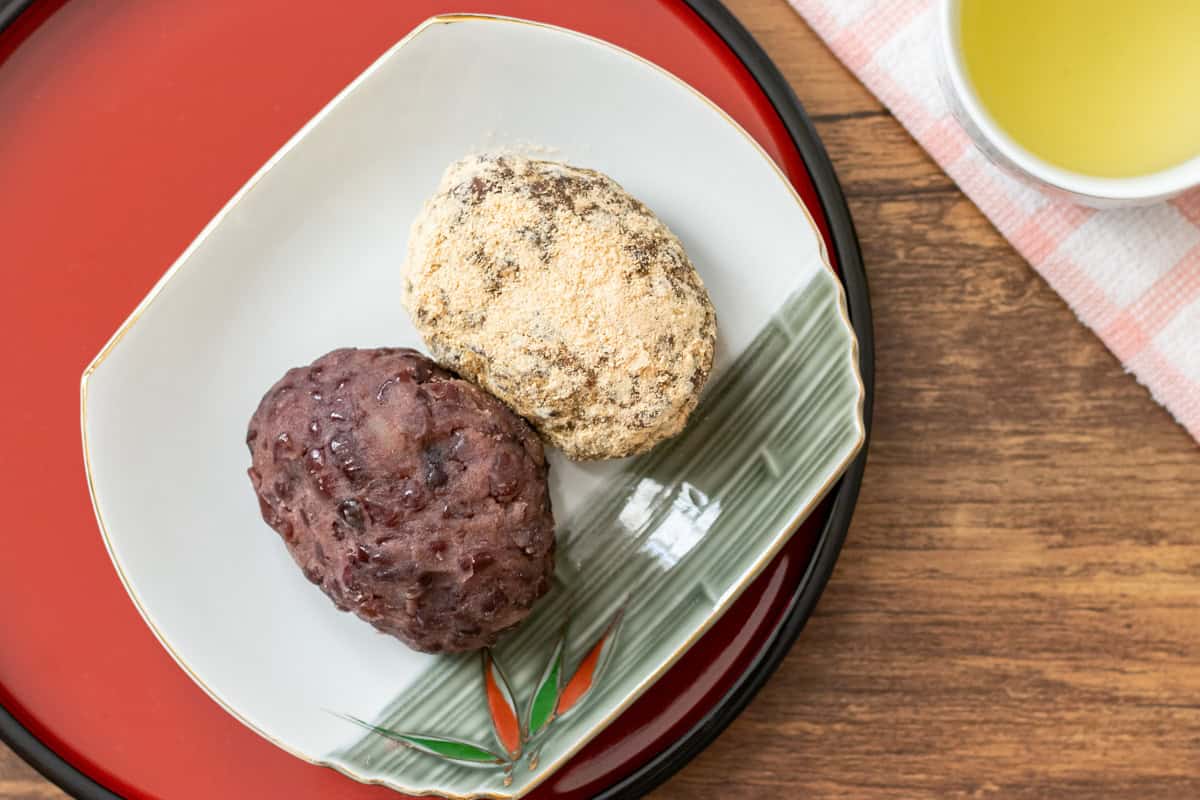
Methods for preparing glutinous rice
There are two main methods for cooking the glutinous rice used for ohagi: cooking it in a rice cooker (or a pot) or steaming it in a steamer.
Traditionally, this treat was made by steaming glutinous rice. This method gives the rice a chewy, sticky texture. In modern times, however, rice cookers have become a staple in most Japanese households, making this method more commonly used. This approach makes the rice softer and moister.
Since making ohagi involves lightly pounding the rice, the texture doesn’t need to be perfect. Therefore, I recommend using a rice cooker for convenience. Since many households outside of Japan might not have one, the recipe suggests using a pot instead. There is almost no difference in the result between using a rice cooker and a pot.
Variations
Ohagi is made by covering pounded glutinous rice with anko, but it is also common to coat it with other ingredients. The most popular option is kinako (roasted soybean flour), which adds a nutty flavor and a visually appealing golden hue to the treat. In some regions of Japan, other ingredients are used to create unique variations, including:
- Black sesame seeds
- Aonori (dried green seaweed flakes)
- Zunda (a sweet edamame paste, used as a substitute for anko)
In addition to these, variations can include switching from chunky anko (tsubu-an) to smooth paste (koshi-an), or even wrapping the anko around the glutinous rice instead of covering the rice with it. After trying the classic version of ohagi in this recipe, you might enjoy experimenting with some of these variations.
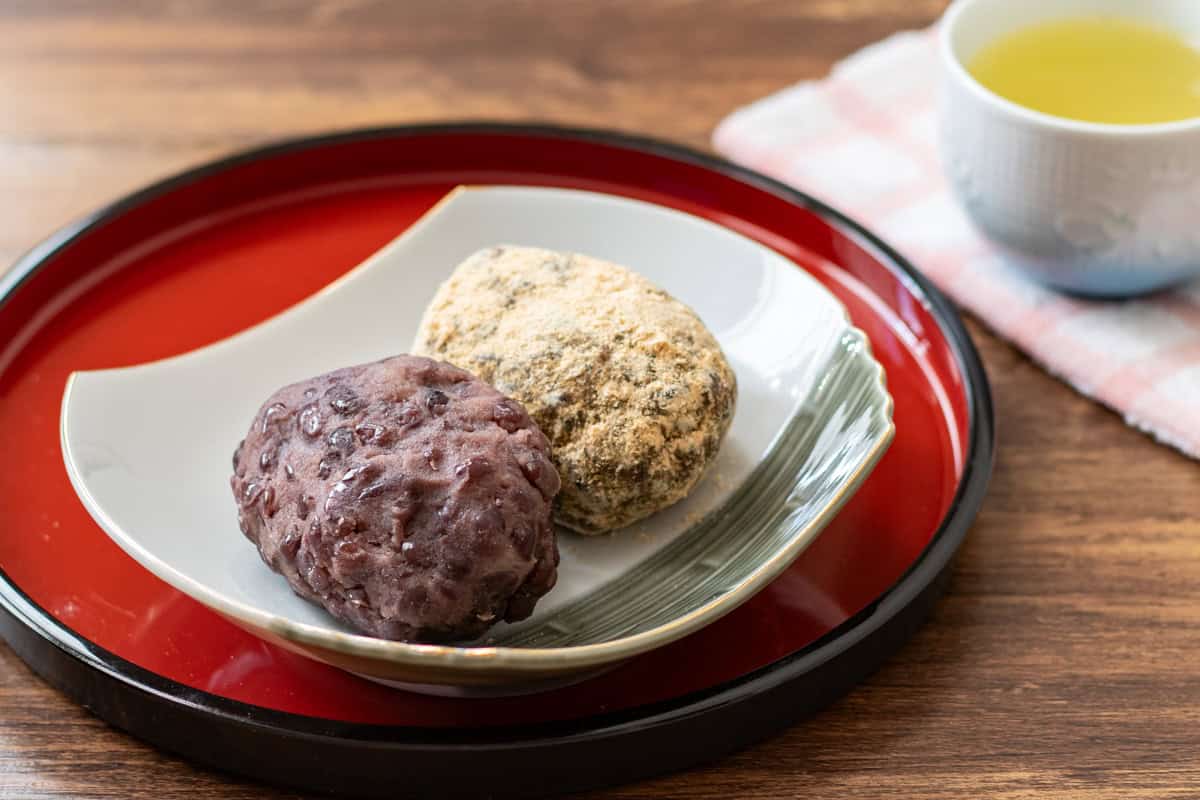
📋Step-by-step recipe
Ingredients
- ¾ cup glutinous rice (sweet rice) (1 rice cooker cup per batch)
- ¾ cup water
- 14 oz anko (sweet red bean paste) (You can prepare it from scratch by following the instructions on the linked page.)
For the kinako version:
- 2 Tbsp kinako (roasted soybean flour)
- ½ Tbsp sugar
- pinch of salt
Instructions
🕒 Total: 1 hr 45 minsThe recipe calls for cooking glutinous rice in a pot, but if you have a rice cooker, feel free to use it and cook the rice as you normally would (or use the sweet rice setting, if your rice cooker has one).
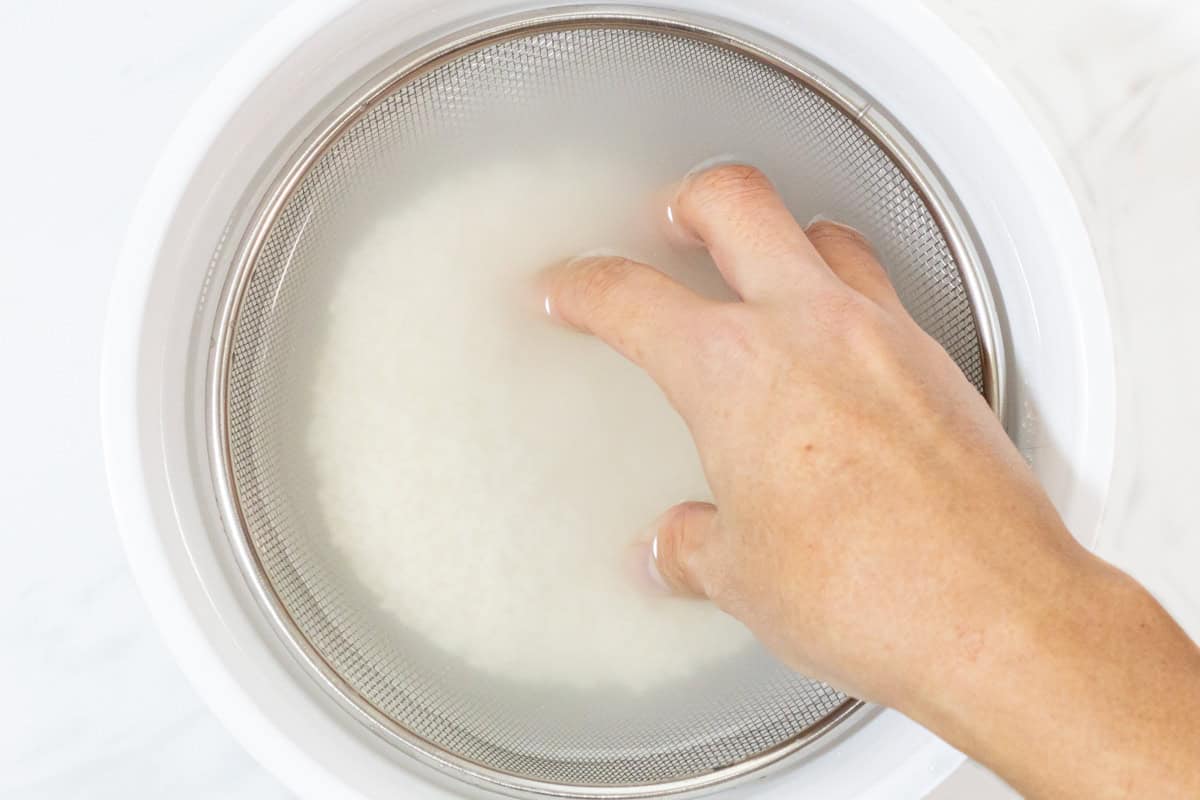
Step 1
Place a sieve over a bowl, add glutinous rice, and rinse it with water. Repeat this process several times, changing the water each time.
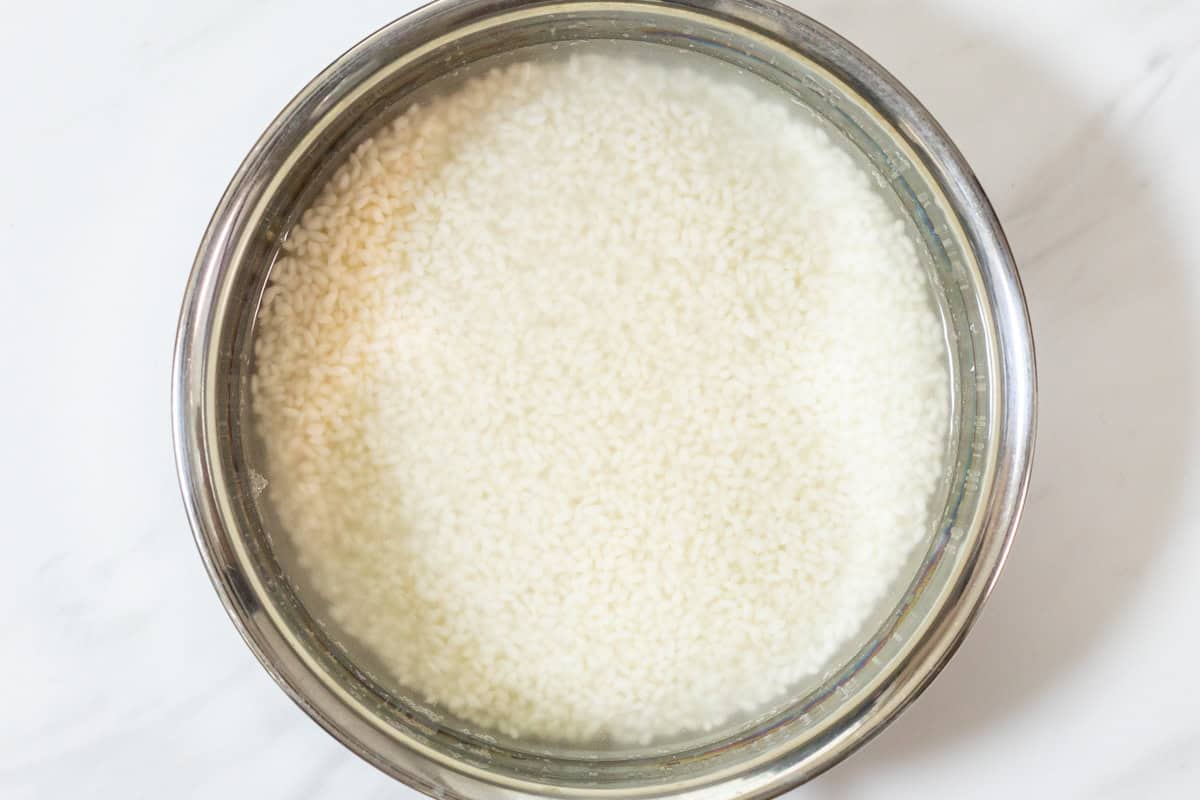
Step 2
Soak the rinsed rice in water in a pot for at least 1 hour.
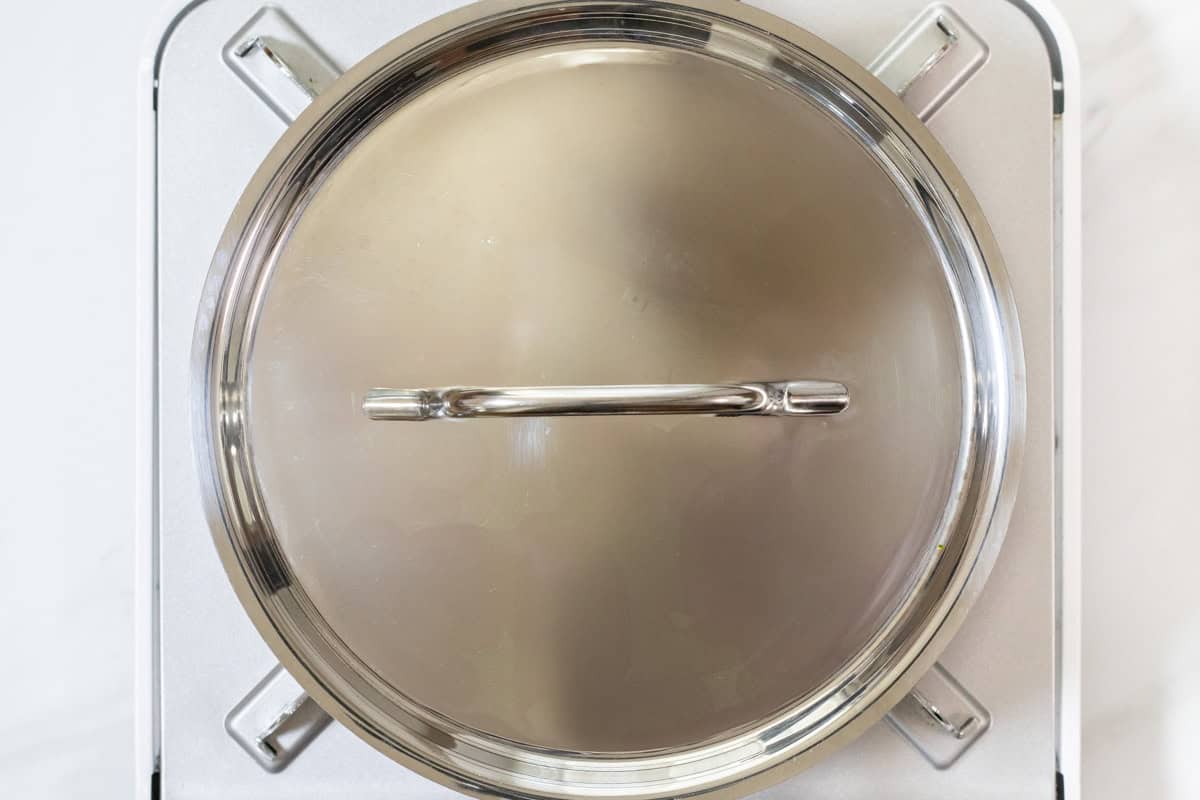
Step 3
Cover the pot and bring it to a boil. Once boiling, reduce the heat to low and continue cooking for 10 minutes (11 minutes for 2 batches, 12 minutes for 3 batches).
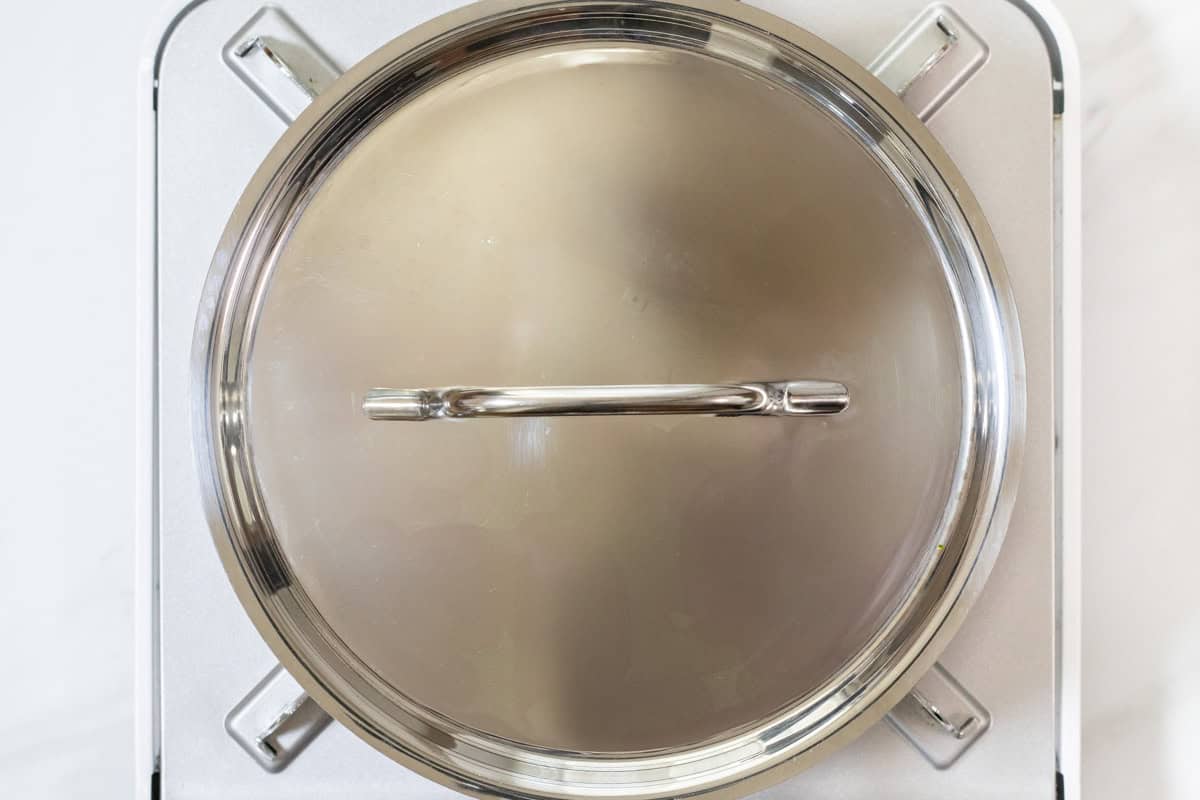
Step 4
Turn off the heat and let it steam for 10 minutes with the lid still on.
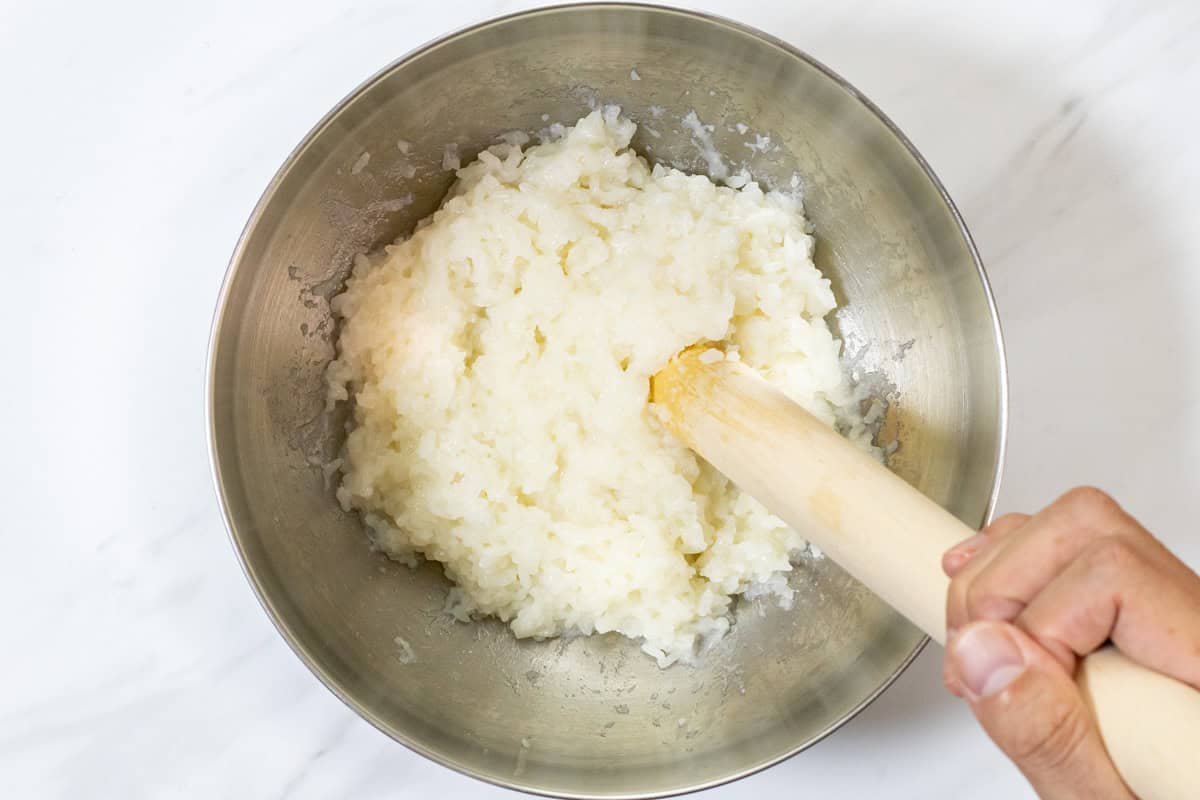
Step 5
Transfer the cooked glutinous rice to a large bowl and lightly pound it with a damp rolling pin until about half of the rice grains are broken but not fully mashed.
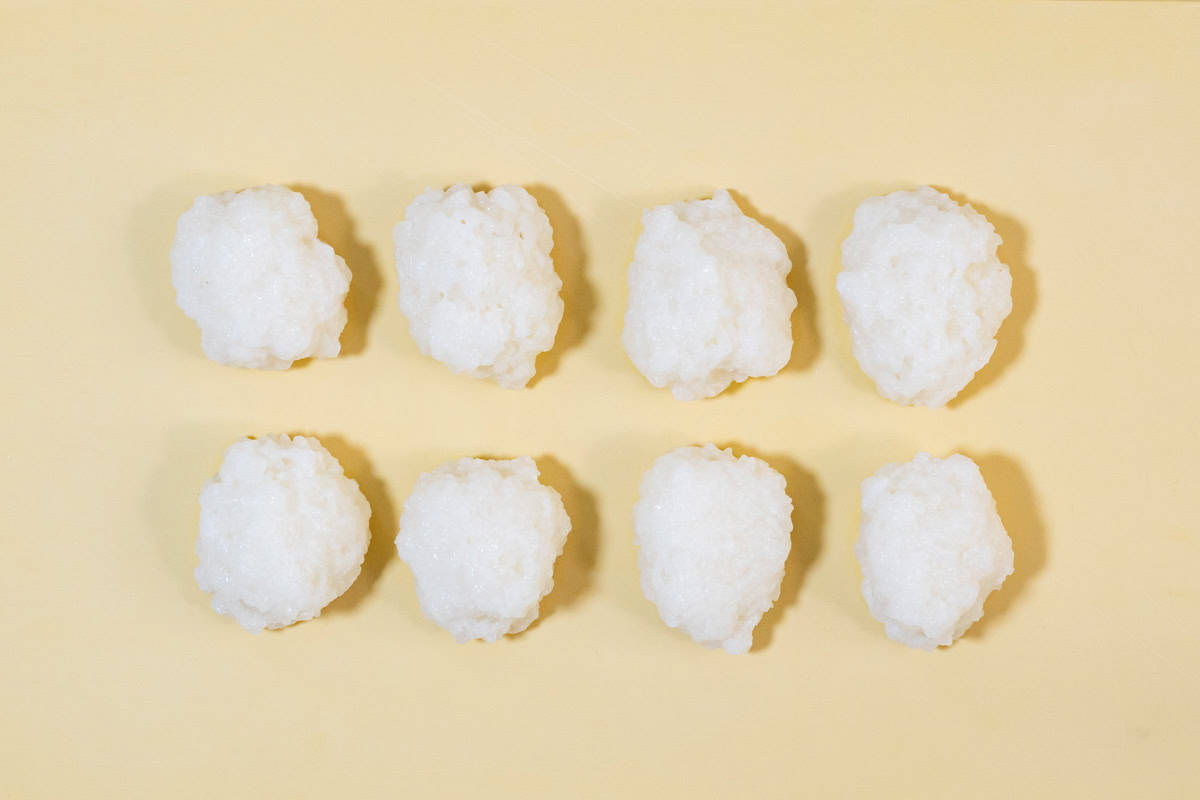
Step 6
Divide the rice into 8 portions per batch, and shape each portion into an oval or a round shape.
Wearing disposable gloves can help keep your hands clean from this point onward.
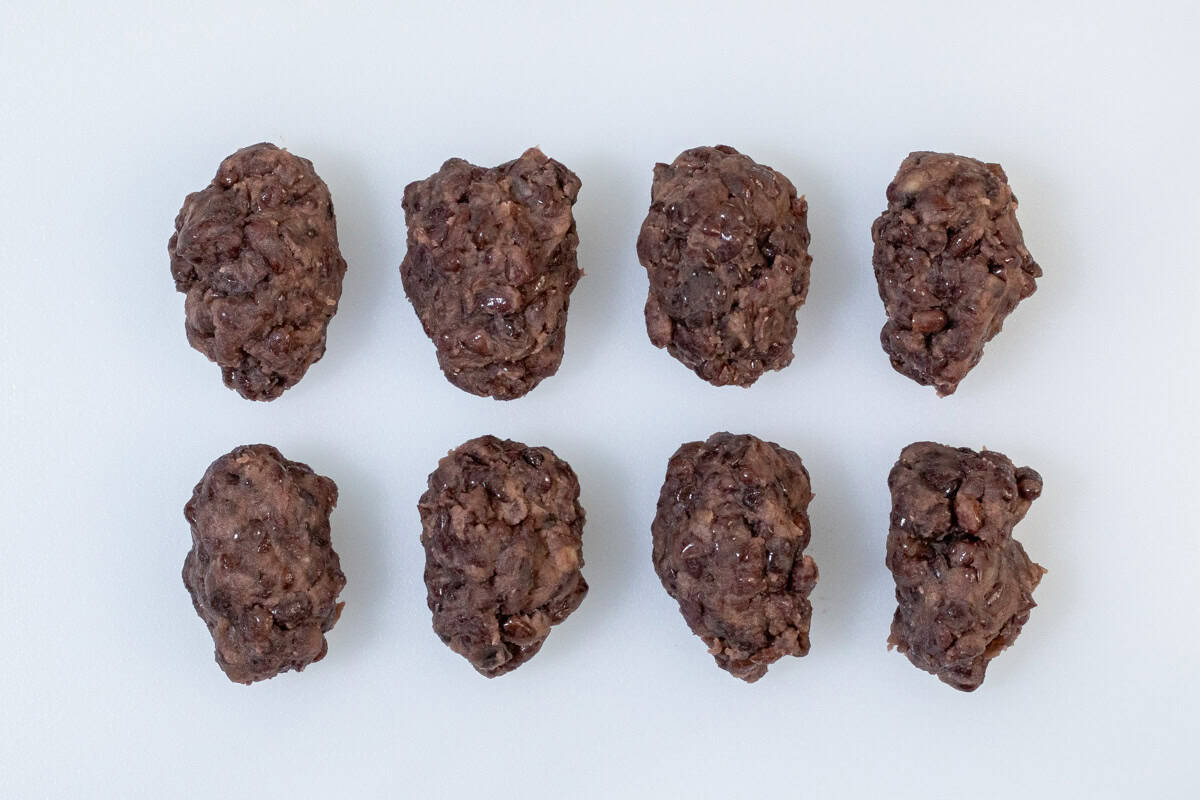
Step 7
Divide anko into the same number of portions as the rice.
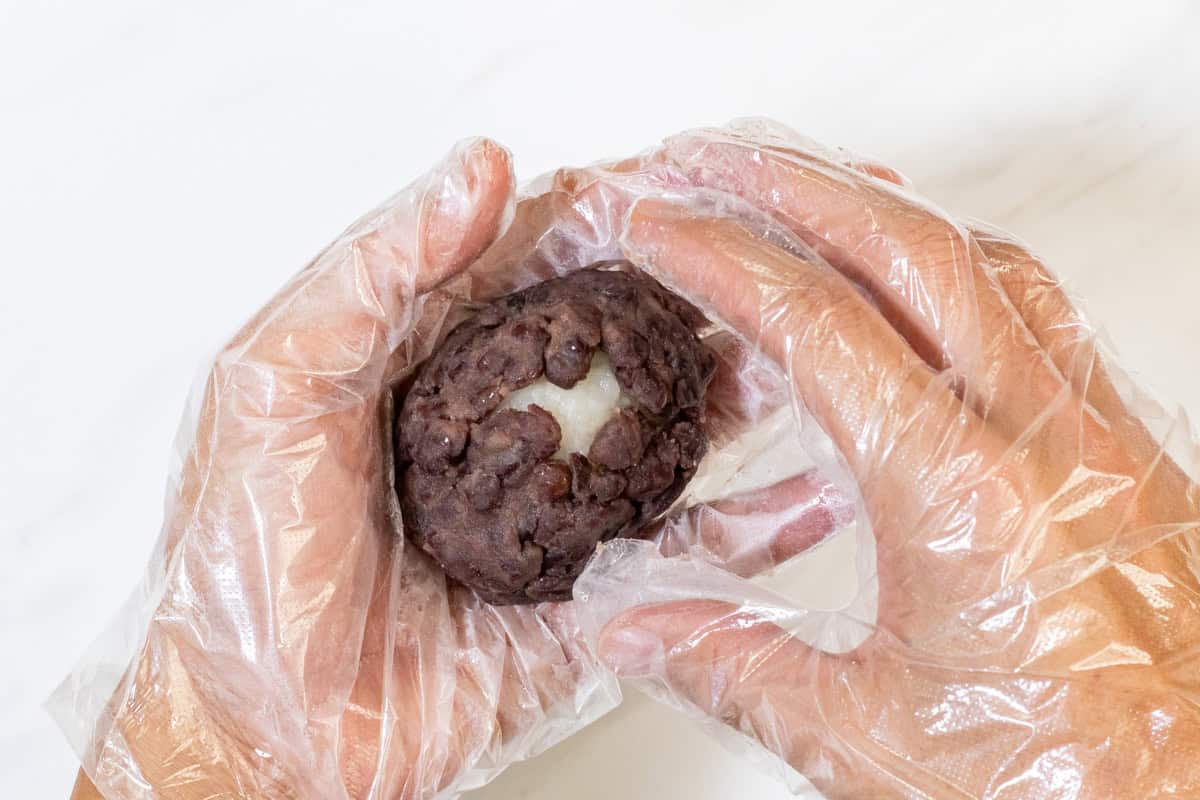
Step 8
Take one portion of the anko and spread it into a circle on your palm, larger than a rice portion. Then, place a portion of the rice in the center and wrap it with the anko. Repeat this process for as many ohagi as you plan to make. You can either completely wrap the rice with the anko or leave the bottom exposed.
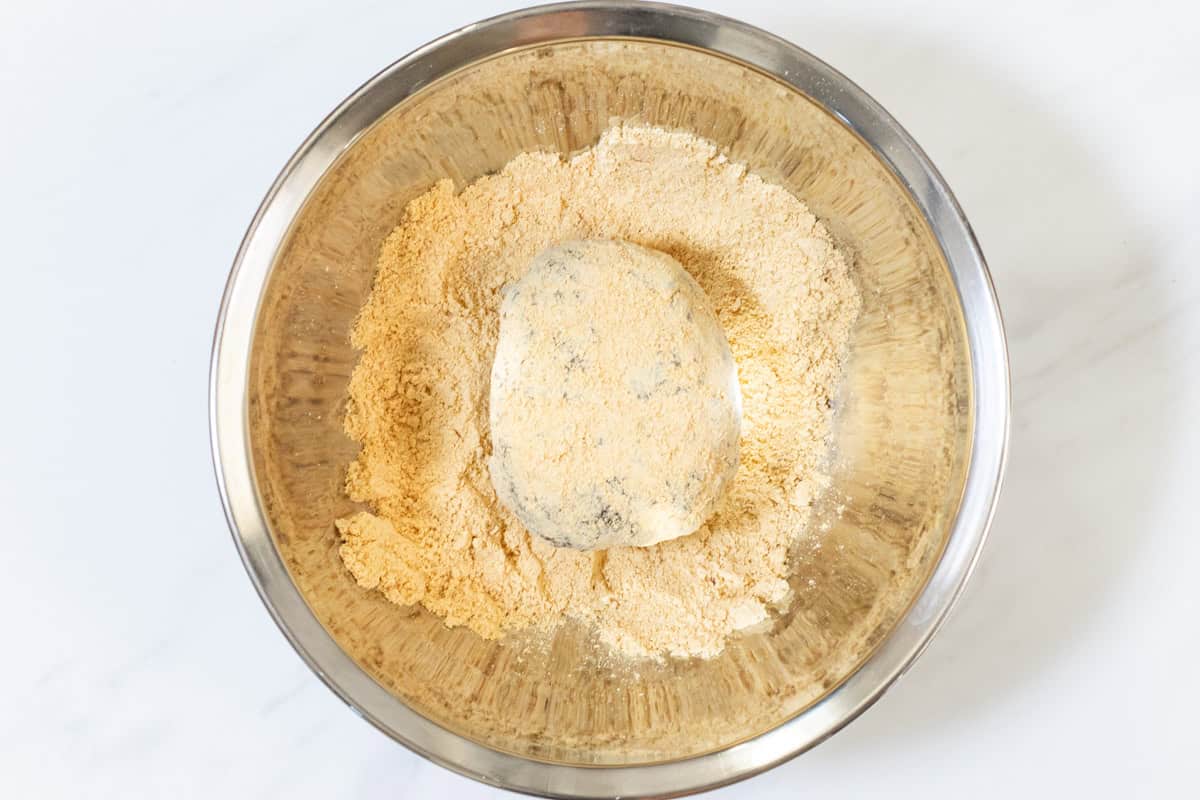
Step 9 (When making the kinako version)
Combine kinako with sugar and salt in a bowl. Place the prepared ohagi in the bowl and coat them with the kinako mixture.
To store
It is best to consume it as soon as possible (at least on the same day) since cooked glutinous rice tends to harden. Refrigeration is not recommended, but if necessary, you can freeze it for up to 3 weeks.
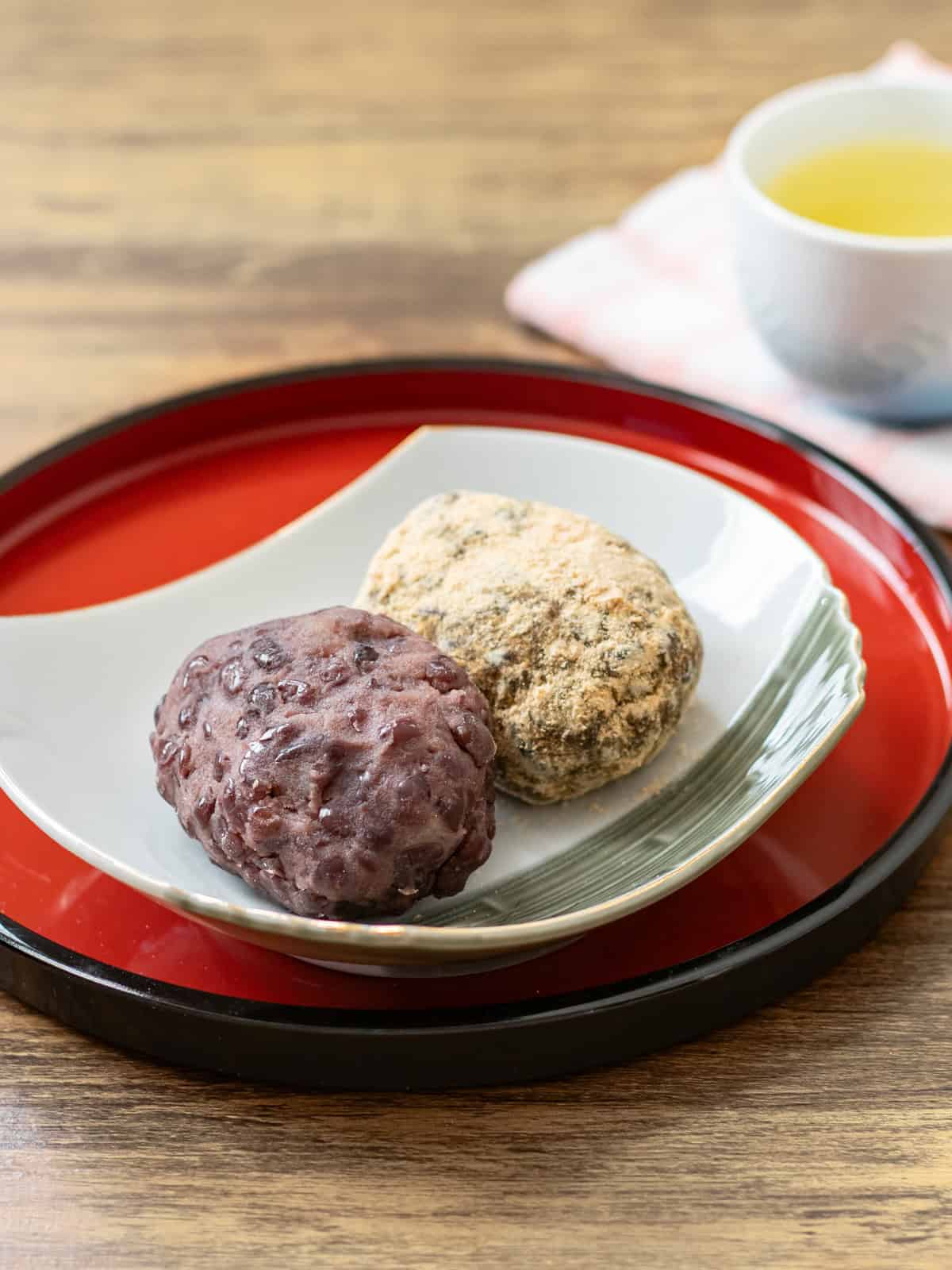
If you try this recipe, I’d love to hear what you think. Please consider leaving a review and star rating in the comments below. If you enjoyed it, I’d really appreciate it if you shared it with your friends.
More traditional Japanese sweet recipes you'll love
Recipe card

Ohagi / Botamochi (Japanese Sweet Rice Balls)
Ingredients
- ¾ cup glutinous rice (sweet rice) (1 rice cooker cup per batch)
- ¾ cup water
- 14 oz anko (sweet red bean paste) (You can prepare it from scratch by following the instructions on the linked page.)
For the kinako version:
- 2 Tbsp kinako (roasted soybean flour)
- ½ Tbsp sugar
- pinch of salt
Instructions
- Place a sieve over a bowl, add glutinous rice, and rinse it with water. Repeat this process several times, changing the water each time.
- Soak the rinsed rice in water in a pot for at least 1 hour.
- Cover the pot and bring it to a boil. Once boiling, reduce the heat to low and continue cooking for 10 minutes (11 minutes for 2 batches, 12 minutes for 3 batches).
- Turn off the heat and let it steam for 10 minutes with the lid still on.
- Transfer the cooked glutinous rice to a large bowl and lightly pound it with a damp rolling pin until about half of the rice grains are broken but not fully mashed.
- Divide the rice into 8 portions per batch, and shape each portion into an oval or a round shape.Wearing disposable gloves can help keep your hands clean from this point onward.
- Divide anko into the same number of portions as the rice.
- Take one portion of the anko and spread it into a circle on your palm, larger than a rice portion. Then, place a portion of the rice in the center and wrap it with the anko. Repeat this process for as many ohagi as you plan to make. You can either completely wrap the rice with the anko or leave the bottom exposed.
- (When making the kinako version) Combine kinako with sugar and salt in a bowl. Place the prepared ohagi in the bowl and coat them with the kinako mixture.
Notes
- The recipe calls for cooking glutinous rice in a pot, but if you have a rice cooker, feel free to use it and cook the rice as you normally would (or use the sweet rice setting, if your rice cooker has one).
- It is best to consume it as soon as possible (at least on the same day) since cooked glutinous rice tends to harden. Refrigeration is not recommended, but if necessary, you can freeze it for up to 3 weeks.

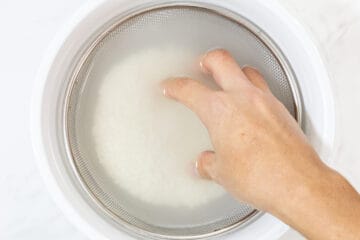
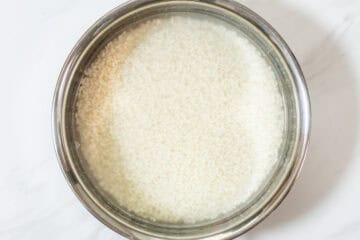
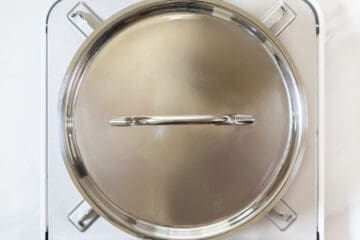
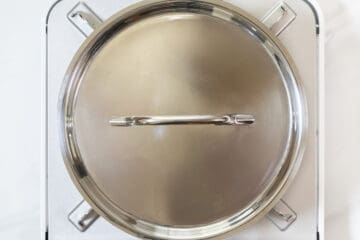
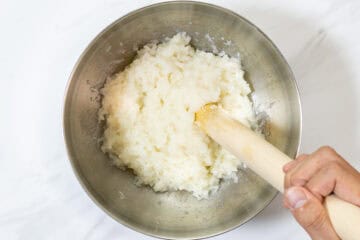
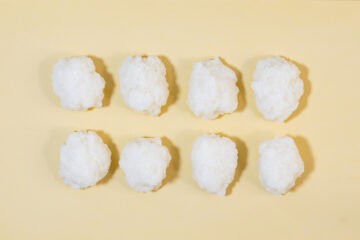
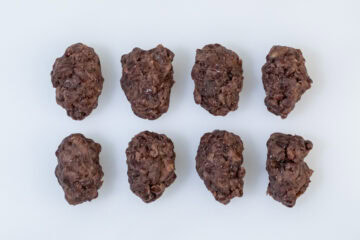
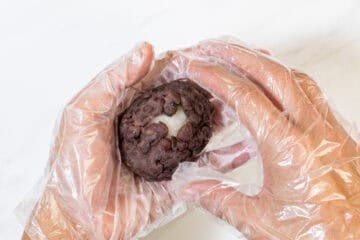
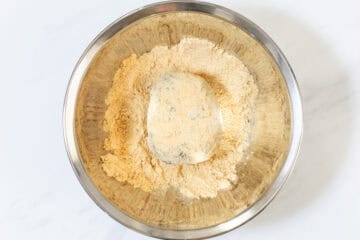
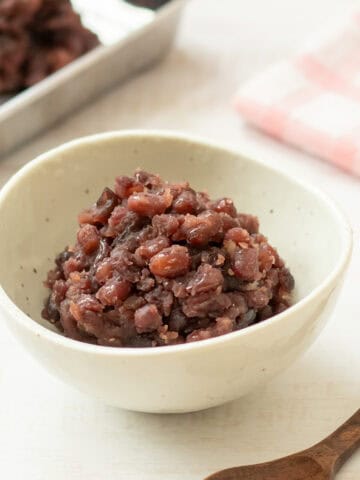

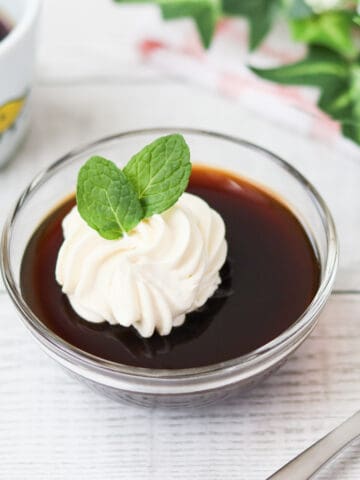
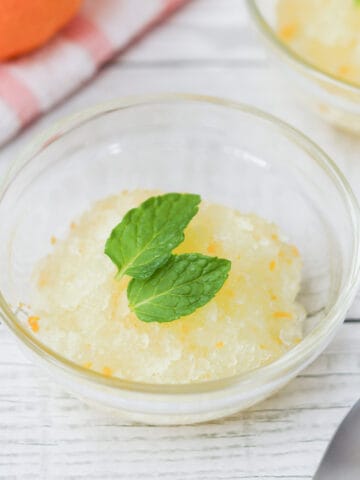
Leave a Rating and a Comment